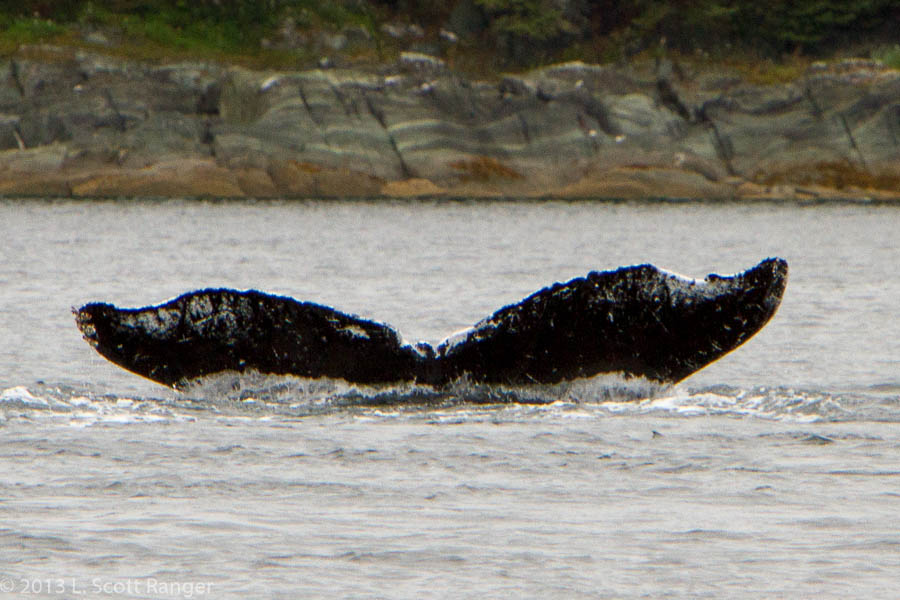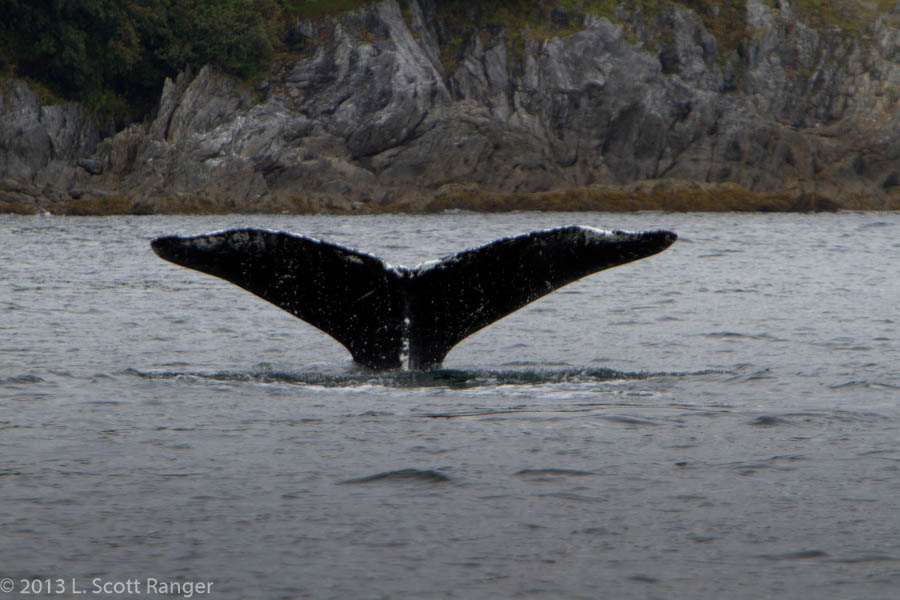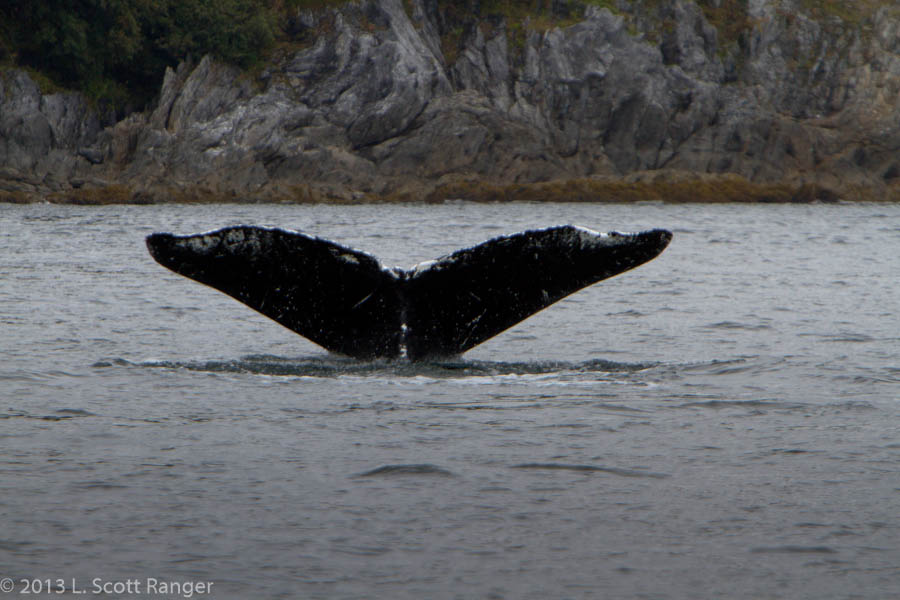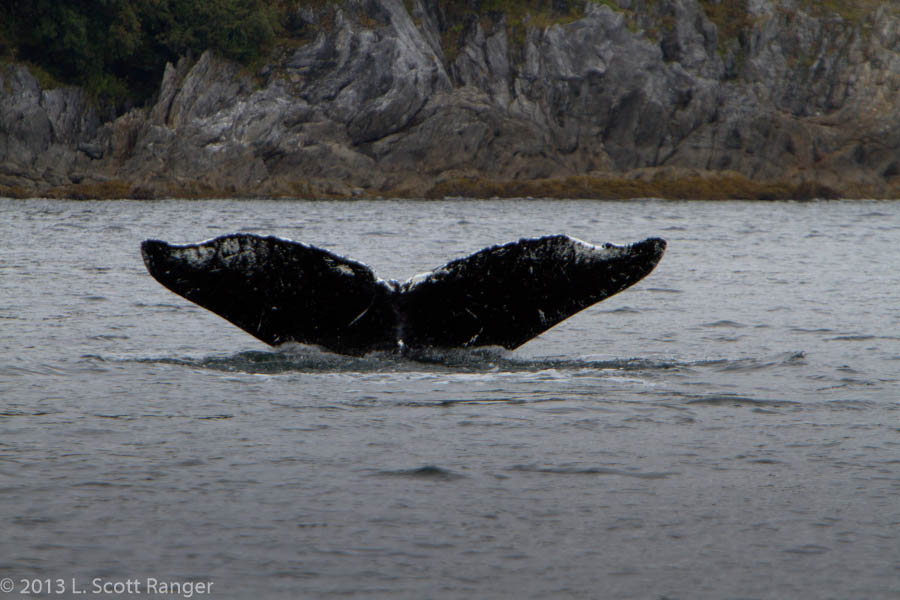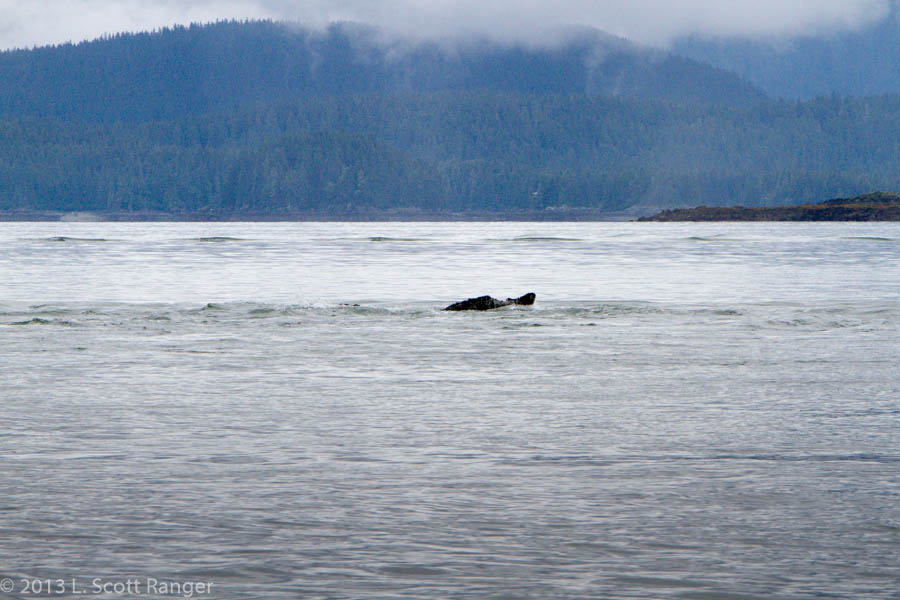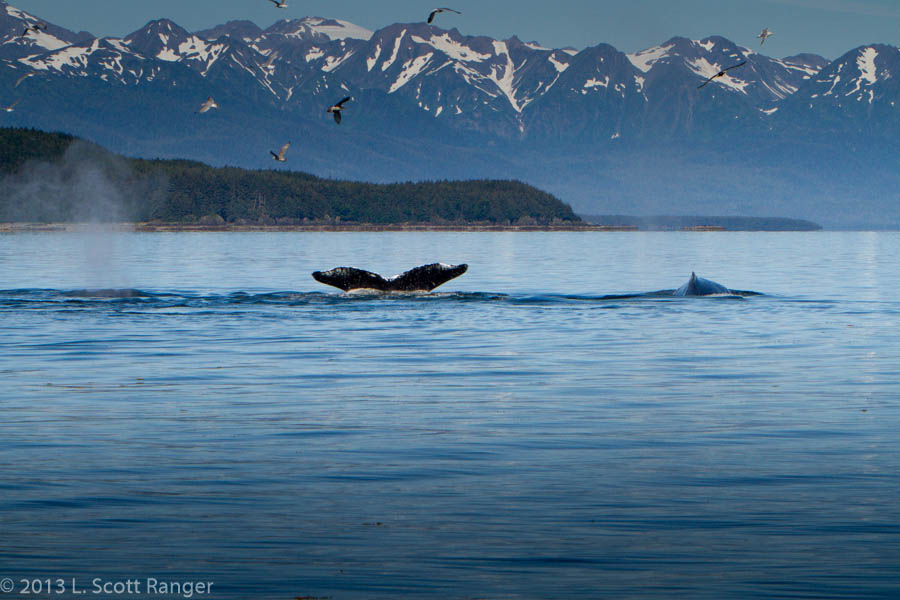545, Rubberlips
Rubberlips is such a comical name, every time I say it I wonder just how the Alaska Whale Foundation gave her that name. Other names include "Friendly Fred" and "Lumpy" but I only hear "Rubberlips" out on the water. It is just too fun to say!
This whale is instantly recognizable in our waters. I've never seen another whale with anything like the profile of the trailing edge of its flukes. The central notch is extremely broad, about 10% of the entire breadth of the flukes, and a bit "lumpy". The general shape of the flukes are broad, but what shows up the best, even at great distance, are the prominent scallops near the ends with the corresponding rise that equals the trailers. This shot overemphasizes the white patches as they are often not as prominent.
This whale is instantly recognizable in our waters. I've never seen another whale with anything like the profile of the trailing edge of its flukes. The central notch is extremely broad, about 10% of the entire breadth of the flukes, and a bit "lumpy". The general shape of the flukes are broad, but what shows up the best, even at great distance, are the prominent scallops near the ends with the corresponding rise that equals the trailers. This shot overemphasizes the white patches as they are often not as prominent.
Click on any image to enlarge. This diving sequence illustrates that the angle of view affects our perception of color on the flukes. It is only when the tail is vertical and parallel to our viewpoint that the white shows well. Sequence taken September 15, 2011 in Favorite Channel near the rocky mainland.
This iconic Alaska view is from August 30, 2012 just west of Eagle Reef in Favorite Channel with the north end of Shelter Island and the Chilcat Mountains in view.
Jay Beedle notes that "Lumpy" is a male and that he often sees it bubble net feeding. The Alaska Whale Foundation notes the whale is a "member of core bubble netting group" but does not identify the sex. Conventional wisdom holds that bubble net leaders are females. I find sexing whales in our waters extremely difficult and am confident only when I see a cow and calf pair or use Suzie Teerlink's information as my source.
Jay Beedle notes that "Lumpy" is a male and that he often sees it bubble net feeding. The Alaska Whale Foundation notes the whale is a "member of core bubble netting group" but does not identify the sex. Conventional wisdom holds that bubble net leaders are females. I find sexing whales in our waters extremely difficult and am confident only when I see a cow and calf pair or use Suzie Teerlink's information as my source.
